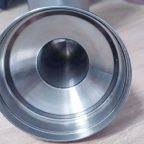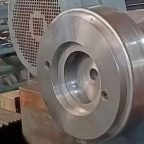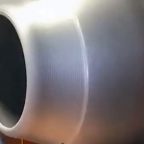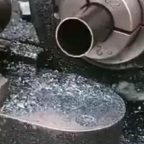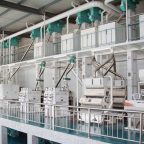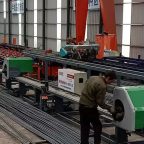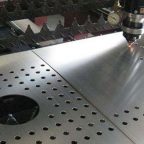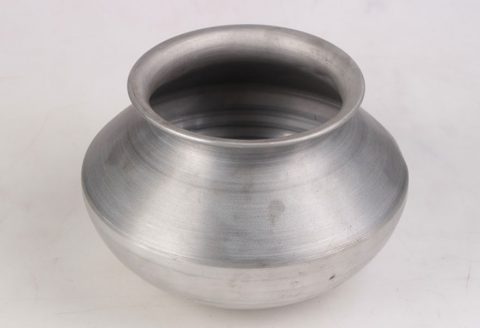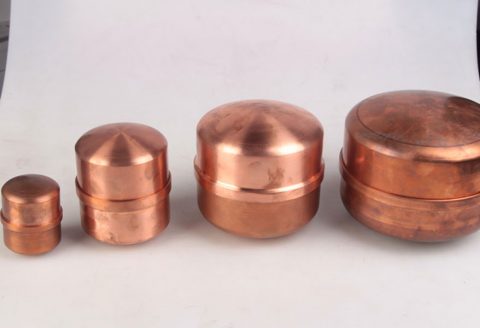
Flexible mold technology in spinning processing represents a transformative approach in the field of metal forming, enabling the production of complex, high-precision components with enhanced efficiency and adaptability. Spinning, a metalworking process that forms sheet metal or tubular blanks into rotationally symmetric or asymmetric shapes, has evolved significantly with the integration of flexible mold systems. Unlike traditional rigid molds, flexible molds allow for rapid reconfiguration, reduced setup times, and the ability to produce small-batch, customized parts economically. This article provides a comprehensive exploration of flexible mold technology in spinning processing, covering its principles, historical development, technical advancements, applications, challenges, and future prospects. Through detailed analysis and comparative tables, it aims to elucidate the scientific and industrial significance of this innovative manufacturing paradigm.
Introduction to Spinning Processing
Spinning is a metal forming technique that involves rotating a metal blank or tube at high speed while applying localized pressure with a tool to shape it against a mold or mandrel. The process is widely used to produce hollow, rotationally symmetric parts such as cones, cylinders, hemispheres, and more complex geometries. Spinning can be categorized into several types, including conventional spinning, shear spinning, and flow spinning, each distinguished by the deformation mechanics and tooling used.
- Conventional Spinning: Involves shaping the blank without significant changes in wall thickness, primarily through bending and stretching.
- Shear Spinning: Reduces wall thickness by applying shear forces, resulting in a thinner, stronger component.
- Flow Spinning: Combines elements of shear and conventional spinning, allowing for controlled material flow to achieve precise geometries.
Historically, spinning relied on rigid mandrels tailored to specific part geometries, which limited flexibility and increased costs for small production runs. The advent of flexible mold technology has addressed these limitations by introducing adaptable tooling systems that can accommodate a range of shapes and sizes without requiring dedicated molds for each part.
Principles of Flexible Mold Technology
Flexible mold technology in spinning processing is based on the use of reconfigurable or adaptable tooling systems that replace traditional fixed mandrels. These systems employ mechanisms such as adjustable rollers, multi-point forming tools, or segmented molds to dynamically shape the workpiece. The core principle is to enable rapid mold reconfiguration, thereby reducing setup times, minimizing material waste, and enhancing the ability to produce customized parts.
Key Components of Flexible Mold Systems
Flexible mold systems typically include the following components:
- Adjustable Rollers: In lieu of a solid mandrel, multiple rollers are used to define the shape of the workpiece. These rollers can be independently controlled to create both symmetric and asymmetric profiles.
- Multi-Point Forming Tools: Arrays of adjustable pins or punches that can be repositioned to form complex surfaces, similar to discrete pin tooling systems.
- Segmented Molds: Modular mold segments that can be reconfigured to match different part geometries.
- Control Systems: Advanced numerical control (NC) or computer numerical control (CNC) systems that precisely adjust the position and force of the tooling elements.
- Support Structures: Robust frameworks that maintain alignment and stability during high-speed spinning.
Mechanics of Flexible Spinning
The mechanics of flexible spinning differ from traditional spinning due to the dynamic interaction between the workpiece and the adjustable tooling. In conventional spinning, the mandrel provides continuous support, ensuring uniform deformation. In flexible spinning, the tooling applies localized forces, requiring precise control to prevent defects such as wrinkling, thinning, or springback. The process can be modeled using finite element analysis (FEA) to predict material behavior and optimize tool paths.
The primary deformation modes in flexible spinning include:
- Bending: Induced by the curvature imposed by the rollers or pins.
- Stretching: Occurs as the material is drawn over the tooling, particularly in asymmetric forming.
- Shear: Present in processes that reduce wall thickness, similar to shear spinning.
These modes are influenced by factors such as toolpath design, roller geometry, spinning speed, and material properties. The flexibility of the mold allows for iterative adjustments during the process, enabling real-time optimization of forming parameters.
Historical Development of Flexible Mold Technology
The evolution of flexible mold technology in spinning processing is rooted in the broader history of metal forming and manufacturing innovation. Early spinning processes, dating back to ancient times, relied on manual tools and simple wooden or metal mandrels. Industrialization in the 19th century introduced mechanized spinning machines, but these were still limited by rigid tooling.
Early Innovations (1900–1950)
In the early 20th century, spinning became a critical process in industries such as aerospace and automotive manufacturing. The need for lightweight, hollow components drove advancements in tooling design, but the reliance on dedicated mandrels remained a bottleneck. Initial attempts at flexibility involved manual adjustments to mandrel shapes or the use of collapsible mandrels for easier part removal.
Rise of Numerical Control (1950–1980)
The introduction of numerical control in the mid-20th century marked a turning point for spinning technology. NC machines allowed for precise control of tool movements, enabling more complex geometries. During this period, researchers began exploring alternatives to rigid mandrels, such as adjustable roller systems and segmented tooling. These early flexible systems were limited by mechanical complexity and the lack of advanced control algorithms.
Modern Flexible Mold Systems (1980–Present)
The late 20th and early 21st centuries saw significant advancements in flexible mold technology, driven by developments in CNC systems, robotics, and materials science. Key milestones include:
- 1980s: Introduction of multi-point forming (MPF) systems, which used arrays of adjustable pins to create reconfigurable molds.
- 1990s: Development of flexible spinning machines with independently controlled rollers, capable of forming asymmetric shapes.
- 2000s: Integration of FEA and real-time process monitoring, enabling precise control of deformation and defect prevention.
- 2010s–Present: Adoption of Industry 4.0 technologies, including artificial intelligence (AI) and the Internet of Things (IoT), to enhance mold reconfiguration and process optimization.
These advancements have positioned flexible mold technology as a cornerstone of modern spinning processes, particularly in industries requiring high customization and rapid prototyping.
Technical Advancements in Flexible Mold Spinning
Flexible mold technology has benefited from a range of technical innovations that enhance its precision, efficiency, and versatility. This section explores the key advancements in materials, tooling design, control systems, and process optimization.
Materials for Flexible Molds
The choice of materials for flexible mold components is critical to their performance. Common materials include:
- High-Strength Steels: Used for rollers and support structures due to their durability and resistance to wear.
- Nickel Alloys: Employed in high-temperature applications, such as aerospace component forming, due to their thermal stability.
- Polymeric Composites: Utilized in segmented molds for lightweight and cost-effective solutions.
- Ceramics: Applied in specialized applications requiring high hardness and resistance to abrasion.
Recent developments in additive manufacturing have enabled the production of complex mold components with tailored properties, such as graded hardness or embedded sensors.
Tooling Design Innovations
Tooling design in flexible spinning has evolved to address the challenges of dynamic forming. Notable innovations include:
- Modular Roller Systems: Rollers with interchangeable tips and adjustable angles to accommodate different part geometries.
- Active Pin Arrays: Multi-point forming tools with individually actuated pins, allowing for precise control of mold curvature.
- Hybrid Molds: Combining rigid and flexible elements to balance precision and adaptability.
These designs are supported by advanced simulation tools that optimize tool paths and predict material flow.
Control Systems and Automation
Modern flexible spinning machines rely on sophisticated control systems to manage the complexity of reconfigurable tooling. Key features include:
- CNC Integration: Enables precise positioning of rollers and pins, with sub-millimeter accuracy.
- Real-Time Feedback: Sensors monitor parameters such as force, temperature, and material thickness, allowing for adaptive control.
- AI-Driven Optimization: Machine learning algorithms analyze process data to recommend tool paths and prevent defects.
Automation has also reduced operator intervention, improving repeatability and reducing labor costs.
Process Optimization Techniques
Optimizing the flexible spinning process involves balancing productivity, quality, and cost. Techniques include:
- Finite Element Analysis (FEA): Simulates material deformation to predict defects and optimize tool paths.
- Toolpath Parameterization: Uses mathematical models, such as Bezier curves, to design efficient roller trajectories.
- Multi-Stage Forming: Divides the spinning process into stages to control material flow and minimize defects.
These techniques have been validated through experimental studies and industrial applications, demonstrating significant improvements in part quality and production efficiency.
Applications of Flexible Mold Spinning
Flexible mold technology has expanded the applications of spinning processing across various industries, enabling the production of complex components with high precision and efficiency. This section highlights key applications in aerospace, automotive, medical, and other sectors.
Aerospace Industry
The aerospace industry is a primary beneficiary of flexible mold spinning due to its need for lightweight, high-strength components. Applications include:
- Turbine Engine Components: Flexible spinning produces complex shapes such as compressor cones and exhaust nozzles with tight tolerances.
- Satellite Reflectors: Asymmetric spinning forms large, lightweight reflectors with precise surface profiles.
- Aircraft Winglets: Flexible forming creates molds for composite winglets, ensuring uniform thickness and heat transfer during curing.
Flexible spinning reduces lead times and costs for prototyping and small-batch production, critical for aerospace applications.
Automotive Industry
In the automotive sector, flexible mold spinning supports the production of lightweight components to improve fuel efficiency. Examples include:
- Wheel Rims: Flexible spinning forms aluminum or magnesium rims with complex profiles, reducing weight without compromising strength.
- Exhaust Systems: Produces seamless, thin-walled tubes with variable cross-sections for optimized performance.
- Structural Components: Forms lightweight chassis parts with tailored geometries for enhanced crash resistance.
The ability to rapidly reconfigure molds makes flexible spinning ideal for producing customized parts for electric and autonomous vehicles.
Medical Industry
Flexible spinning is increasingly used in the medical field to produce precision components for implants and devices. Applications include:
- Orthopedic Implants: Forms titanium or stainless steel components with complex geometries for hip and knee replacements.
- Surgical Instruments: Produces hollow, lightweight instruments with ergonomic shapes.
- Prosthetic Components: Creates customized parts tailored to individual patient needs.
The precision and flexibility of the process ensure compliance with stringent medical standards.
Other Applications
Flexible mold spinning is also applied in industries such as energy, marine, and consumer goods. Examples include:
- Wind Turbine Components: Forms lightweight, durable parts for nacelles and blades.
- Ship Propellers: Produces asymmetric propeller blades with optimized hydrodynamic profiles.
- Cookware: Creates seamless, high-quality pots and pans with customized shapes.
These applications demonstrate the versatility of flexible mold technology in meeting diverse manufacturing needs.
Comparative Analysis of Flexible vs. Traditional Spinning
To understand the advantages and limitations of flexible mold spinning, a comparative analysis with traditional spinning is essential. The following table summarizes key differences across various parameters.
| Parameter | Traditional Spinning | Flexible Mold Spinning |
|---|---|---|
| Tooling | Rigid, dedicated mandrels | Adjustable rollers, multi-point tools, segmented molds |
| Setup Time | High (requires mold change for each part) | Low (rapid reconfiguration) |
| Part Complexity | Limited to axisymmetric shapes | Supports symmetric and asymmetric shapes |
| Production Volume | Suited for high-volume production | Ideal for low to medium volumes |
| Cost per Part | Low for large batches, high for small batches | Lower for small batches, competitive for medium batches |
| Material Waste | Moderate (depends on blank size) | Low (optimized material flow) |
| Defect Rate | Low with optimized processes | Variable (requires precise control) |
| Applications | Standardized parts (e.g., cookware, simple cones) | Customized, complex parts (e.g., aerospace, medical) |
| Lead Time | Long for new designs (mold fabrication) | Short (no dedicated mold required) |
| Automation Level | Moderate (manual or NC systems) | High (CNC, AI-driven control) |
Advantages of Flexible Mold Spinning
- Versatility: Ability to produce a wide range of geometries without dedicated tooling.
- Cost Efficiency: Reduced mold costs and setup times for small-batch production.
- Rapid Prototyping: Enables quick iteration of designs, critical for industries like aerospace and medical.
- Material Efficiency: Optimized tool paths minimize waste, supporting sustainable manufacturing.
Limitations of Flexible Mold Spinning
- Control Complexity: Requires advanced control systems to manage dynamic tooling, increasing initial investment.
- Defect Sensitivity: Localized forces can lead to defects if not precisely controlled.
- Material Constraints: Some high-strength materials may be challenging to form without specialized tooling.
- Scalability: Less cost-effective for very high-volume production compared to traditional methods.
Challenges in Flexible Mold Spinning
Despite its advantages, flexible mold spinning faces several challenges that must be addressed to achieve widespread adoption. These challenges span technical, economic, and operational domains.
Technical Challenges
- Process Stability: The dynamic nature of flexible tooling can lead to instabilities, such as vibrations or misalignment, affecting part quality.
- Defect Prevention: Wrinkling, thinning, and springback are common issues due to localized deformation, requiring advanced modeling and control.
- Tool Wear: Adjustable rollers and pins are subject to wear, particularly when forming high-strength materials.
- Material Compatibility: Some materials, such as high-temperature alloys, may require specialized tooling or process modifications.
Economic Challenges
- Initial Investment: Flexible spinning machines and control systems are expensive, posing a barrier for small manufacturers.
- Skilled Labor: Operating and maintaining flexible spinning systems requires specialized training.
- Market Adoption: Convincing industries accustomed to traditional methods to adopt flexible spinning can be challenging.
Operational Challenges
- Process Optimization: Developing optimal tool paths and parameters for each part geometry is time-consuming.
- Quality Assurance: Ensuring consistent quality across diverse part designs requires robust inspection methods.
- Scalability: Balancing flexibility with high-volume production efficiency remains a challenge.
Strategies for Overcoming Challenges
To address these challenges, researchers and manufacturers are pursuing several strategies:
- Advanced Simulation Tools: Enhancing FEA models to predict and mitigate defects, reducing trial-and-error.
- Smart Tooling: Integrating sensors and actuators into molds for real-time monitoring and adjustment.
- Hybrid Processes: Combining flexible spinning with other forming techniques, such as stamping or hydroforming, to enhance versatility.
- Material Development: Creating new alloys and composites optimized for flexible spinning.
- Training Programs: Developing educational initiatives to train operators and engineers in flexible spinning technologies.
Future Prospects of Flexible Mold Spinning
The future of flexible mold spinning is promising, driven by ongoing advancements in materials, automation, and digital manufacturing. Key trends and opportunities include:
Integration with Industry 4.0
Flexible spinning is well-suited to the principles of Industry 4.0, which emphasize connectivity, automation, and data-driven decision-making. Future developments may include:
- Digital Twins: Virtual models of spinning processes that enable real-time optimization and predictive maintenance.
- IoT Connectivity: Networks of sensors and machines that share data to improve process efficiency.
- AI and Machine Learning: Algorithms that autonomously optimize tool paths and detect defects.
Expansion to New Materials
The development of advanced materials, such as high-entropy alloys and metal-matrix composites, will expand the capabilities of flexible spinning. These materials offer superior strength and lightweight properties, ideal for aerospace and automotive applications.
Sustainability and Circular Economy
Flexible spinning supports sustainable manufacturing by minimizing material waste and enabling the production of lightweight components that reduce energy consumption. Future innovations may focus on recycling and reusing mold materials, further aligning with circular economy principles.
Emerging Applications
As flexible spinning matures, new applications are likely to emerge in fields such as:
- Renewable Energy: Producing complex components for solar concentrators and tidal energy systems.
- Soft Robotics: Forming lightweight, flexible structures for robotic actuators.
- Space Exploration: Creating customized components for spacecraft and planetary rovers.
Global Collaboration
International collaboration among researchers, manufacturers, and policymakers will accelerate the adoption of flexible spinning. Initiatives such as joint research programs and standardized testing protocols will drive innovation and scalability.
Case Studies of Flexible Mold Spinning
To illustrate the practical impact of flexible mold spinning, this section presents detailed case studies from various industries.
Case Study 1: Aerospace Turbine Cone
Background: A leading aerospace manufacturer required a lightweight turbine cone with a complex, asymmetric profile for a next-generation jet engine. Traditional spinning was infeasible due to the need for multiple dedicated mandrels.
Solution: A flexible spinning machine with adjustable rollers was used to form the cone from a titanium alloy blank. The process employed a CNC system with real-time feedback to adjust roller positions, ensuring precise geometry. FEA simulations optimized the tool path to minimize thinning.
Outcome:
- Production Time: Reduced from 12 weeks (traditional) to 3 weeks.
- Cost Savings: 60% reduction in tooling costs due to elimination of dedicated mandrels.
- Part Quality: Achieved tolerances of ±0.1 mm, meeting aerospace standards.
Key Takeaway: Flexible spinning enabled rapid prototyping and cost-effective production of a high-precision aerospace component.
Case Study 2: Automotive Wheel Rim
Background: An automotive supplier needed to produce customized aluminum wheel rims for a luxury electric vehicle. The rims required unique aesthetic profiles, making traditional spinning uneconomical for small batches.
Solution: A flexible spinning system with modular rollers was employed to form the rims. The system allowed for rapid reconfiguration between different rim designs. AI-driven toolpath optimization reduced material waste and ensured uniform thickness.
Outcome:
- Batch Size: Successfully produced 500 rims in 10 unique designs.
- Material Efficiency: Reduced waste by 25% compared to traditional methods.
- Production Speed: Completed each batch in 40% less time than rigid mandrel spinning.
Key Takeaway: Flexible spinning supported customization and sustainability in automotive manufacturing.
Case Study 3: Medical Implant
Background: A medical device company sought to produce a titanium hip implant with a patient-specific geometry. The implant required a seamless, hollow structure with tight tolerances.
Solution: Flexible spinning was used to form the implant using a multi-point forming tool. The process incorporated real-time monitoring to prevent defects. Post-processing included polishing and sterilization to meet medical standards.
Outcome:
- Customization: Produced implants tailored to individual patient scans.
- Quality: Achieved surface roughness of Ra 0.2 µm, critical for biocompatibility.
- Lead Time: Reduced from 8 weeks to 2 weeks per implant.
Key Takeaway: Flexible spinning enabled personalized medical solutions with high precision and efficiency.
Conclusion
Flexible mold technology in spinning processing represents a paradigm shift in metal forming, offering unparalleled versatility, efficiency, and precision. By replacing rigid mandrels with reconfigurable tooling, it addresses the limitations of traditional spinning, enabling the production of complex, customized parts for diverse industries. Despite challenges such as process complexity and initial costs, ongoing advancements in materials, control systems, and automation are paving the way for broader adoption. As flexible spinning integrates with Industry 4.0 and sustainable manufacturing practices, it is poised to play a central role in the future of advanced manufacturing. Through continued research, collaboration, and innovation, flexible mold spinning will unlock new possibilities in aerospace, automotive, medical, and beyond, shaping the next generation of high-performance components.
Maximize Tooling and CNC Metal Spinning Capabilities.
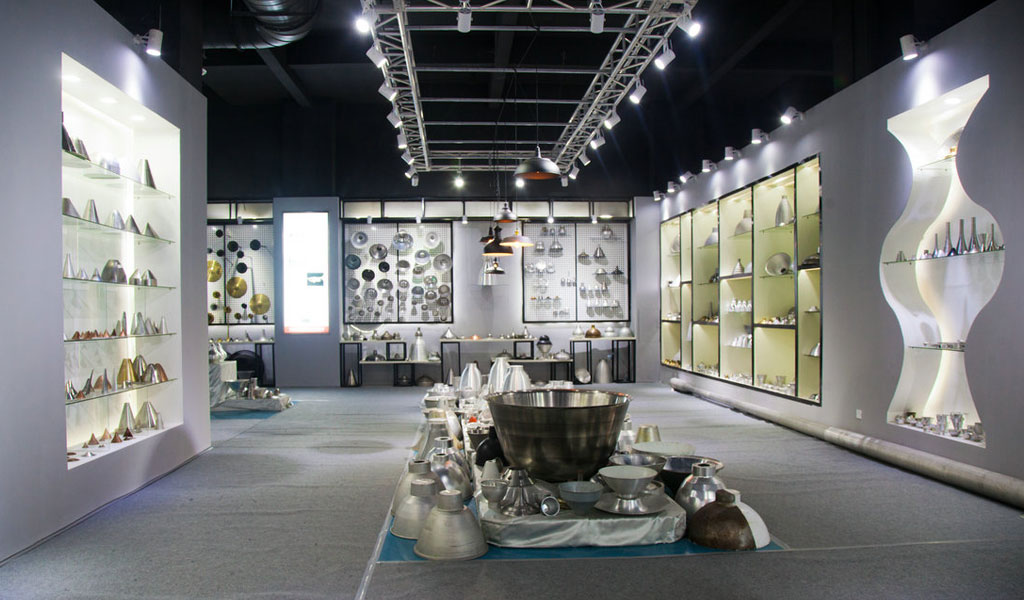
At BE-CU China Metal Spinning company, we make the most of our equipment while monitoring signs of excess wear and stress. In addition, we look into newer, modern equipment and invest in those that can support or increase our manufacturing capabilities. Our team is very mindful of our machines and tools, so we also routinely maintain them to ensure they don’t negatively impact your part’s quality and productivity.
Talk to us today about making a rapid prototype with our CNC metal spinning service. Get a direct quote by chatting with us here or request a free project review.
BE-CU China CNC Metal Spinning service include : CNC Metal Spinning,Metal Spinning Die,Laser Cutting, Tank Heads Spinning,Metal Hemispheres Spinning,Metal Cones Spinning,Metal Dish-Shaped Spinning,Metal Trumpet Spinning,Metal Venturi Spinning,Aluminum Spinning Products,Stainless Steel Spinning Products,Copper Spinning Products,Brass Spinning Products,Steel Spinning Product,Metal Spinnin LED Reflector,Metal Spinning Pressure Vessel,
